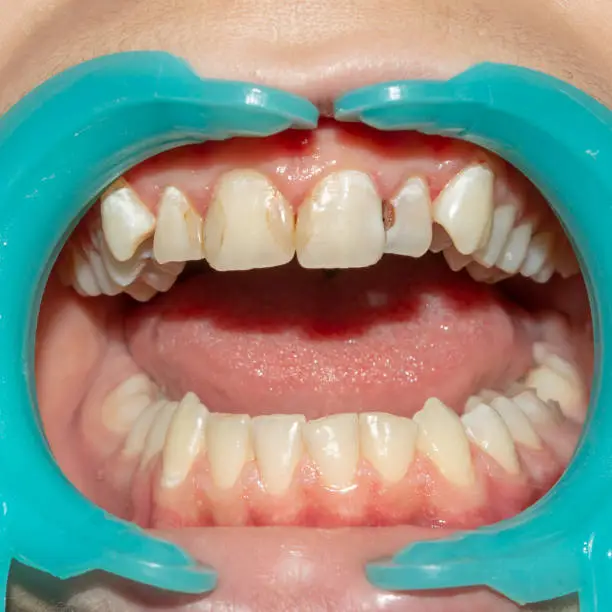
Dental fluorosis is a change in the appearance of the tooth’s enamel. These changes can vary from barely noticeable white spots in mild forms to staining and pitting in the more severe forms. Dental fluorosis only occurs when younger children consume too much fluoride, from any source, over long periods when teeth are developing under the gums.
develops dental fluorosis
Only children aged 8 years and younger can develop dental fluorosis because this is when permanent teeth are developing under the gums.
- Once the teeth erupt through the gums and are in the mouth, they can no longer develop fluorosis.
- The teeth of children older than 8 years, adolescents, and adults cannot develop dental fluorosis.
What does dental fluorosis look like?
dental fluorosis look like:
- Very mild and mild forms of fluorosis—teeth have scattered white flecks, occasional white spots, frosty edges, or fine, lacy chalk-like lines. These changes are barely noticeable and difficult to see except by a dental health care professional.
- Moderate and severe forms of fluorosis—teeth have larger white spots and, in the rare, severe form, rough, pitted surfaces.
What are the common sources of fluoride?
common sources of fluoride:
- Toothpaste (if swallowed by young children).
- Drinking water in fluoridated communities.
- Beverages and food processed with fluoridated water.
- Dietary prescription supplements that include fluoride (e.g., tablets or drops).
- Other professional dental products (e.g., mouth rinses, gels, and foams).
- What health care and public health professionals can do to reduce the occurrence of fluorosis
- Counsel parents and caregivers regarding use of fluoride toothpaste by young children
Parents or caregivers should be counseled on the use of fluoride toothpaste by young children, especially those younger than 2 years. There is an increased chance for fluorosis for children younger than 6 years, and especially for those younger than 2 years, because they are more likely to swallow the toothpaste than older children.
For children younger than 2 years, you should consider the fluoride level in the community drinking water, other sources of fluoride, and factors likely to affect susceptibility to tooth decay when weighing the risk and benefits of using fluoride toothpaste. When assessing the risks and benefits, determine if the child may be at high risk for tooth decay because of factors such as poor hygiene, poor diet, or history of decay in the child, and in their siblings or parents.








